What does your dream canoe trip look like? It could be a weeklong wilderness exploration of pristine lakes and rugged portage trails with a best friend. Or an afternoon turtle spotting on a meandering river with the whole family. Maybe your perfect day out involves soloing into hidden backwaters with your four-legged companion.
When it comes to finding the perfect canoe for your paddling aspirations, one size definitely doesn’t fit all. Type of use, number of paddlers and length of trip are just a few of the factors that will influence the best canoe length for your needs.
Consider these nine things to answer the question, “What size canoe do I need?”
Measure of happiness: How to choose the right size canoe
Why size matters
Want to know how a canoe will paddle? Start with its length. The length of a canoe influences how fast it will be, how much it will weigh, how easy it will be to steer—or keep straight—and how much it will hold.
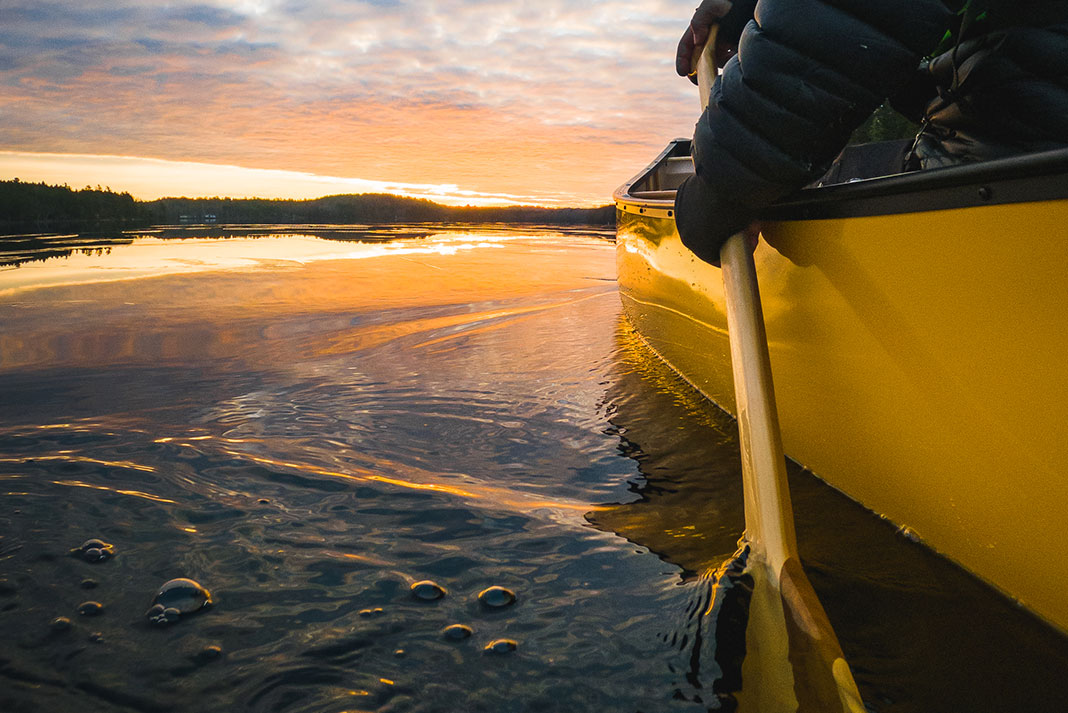
Generally, the longer a canoe is, the easier it will be to paddle straight and the faster it will be on open water. Shorter canoes tend to turn more readily, making them ideal for rivers or paddling styles where maneuverability is essential.
But length isn’t everything, cautions David Hadden, U.S. director of sales and business development for Esquif Canoes. “Don’t get caught up on one specification,” he says. Look at other key predictors of canoe performance—like width, depth and hull shape—to get the whole picture.
Wider canoes are generally more stable, but often slower than their sleeker cousins. Deeper canoes perform better in waves and whitewater, and may have higher volume for carrying heavier loads. The downside to depth: higher sides are more exposed to wind, which can make it harder to stay on track.
Think about which attributes are most important to you. As a wise paddler once said, “I can show you how to turn a fast canoe, I can’t show you how to make a slow canoe go fast.” The most important step in your canoe shopping journey is selecting the right category of canoe. There will be variations in length within that category that you can tweak to suit your needs better, but getting the canoe type right will get you most of the way there.
Solo or tandem?
Do you have a committed paddling partner, or do you mostly go solo? “Most folks looking for a dedicated solo canoe aren’t going to opt for anything bigger than 15 feet,” says Sara Mills, marketing manager at Nova Craft Canoes.
If you want a bit of both, 15- or 16-foot Prospector-style canoes offer the most flexibility. These boats have two seats for paddling tandem, but are equally capable solo boats when paddled sitting backward in the bow seat. The symmetrical hull of many canoes makes this possible.
“Tandem 15-foot models are extremely popular for solo paddlers who want the option of bringing a paddling partner along when feeling social,” confirms Mills.
Best canoe size for smaller lakes and rivers
When it comes to choosing the best canoe length for smaller lakes and rivers, less is more, says Esquif’s David Hadden.
Traditional wisdom has it that longer equals faster, but Hadden says lake country paddlers should consider the trade-off: assuming the same materials and construction, longer canoes are also heavier. “Personally, I like to go with a shorter boat to reduce weight,” he explains. “I typically only carry gear for the day or a weekend, so I don’t need the higher capacity.”
He’s not alone. While canoes were once used to transport heavy loads deep into the wilderness for weeks at a stretch, today’s paddlers are taking shorter trips with less need for high-capacity crafts.
For many, the lighter weight of shorter boats has more appeal than the incremental bump in speed afforded by longer crafts. As well, a shorter canoe is easier to transport, easier to manage to and from the water, and will save your neck on long portages.
Across the northeast, mid-Atlantic and southern states—where lake-to-lake and river travel predominate—the average canoe size for a tandem has long been 16 to 17 feet. But Hadden says he’s seeing a trend toward shorter canoes across the region, with 15 to 16 feet the new “sweet spot” for tandems. Similarly, modern solo lakewater canoes have downsized from around 15 feet in length to 12 to 14 feet.
In Ontario, Nova Craft’s Sara Mills agrees, “16 feet is the most popular choice for the average tandem paddler.” This canoe size handles well when unloaded for casual use around the cottage, she says, “but it can also accommodate gear for the type of trip most of our customers are doing.”
For larger-sized paddlers, those carrying kids or a large dog, or those looking to head out on a longer trip or bigger water, Miller suggests sizing up to a 17-foot canoe.
Canoe builders didn’t simply pick these numbers out of the air. Indigenous paddlers in birchbark canoes ground truthed their designs on lakes and rivers across the Eastern Woodlands 3,000 years before modern builders began measuring things like drag, glide and energy output.
Canoe length may vary by a fraction over time, but it’s unlikely to change radically. Simply put, canoes are the size they are to give paddlers the most bang for their bagel.
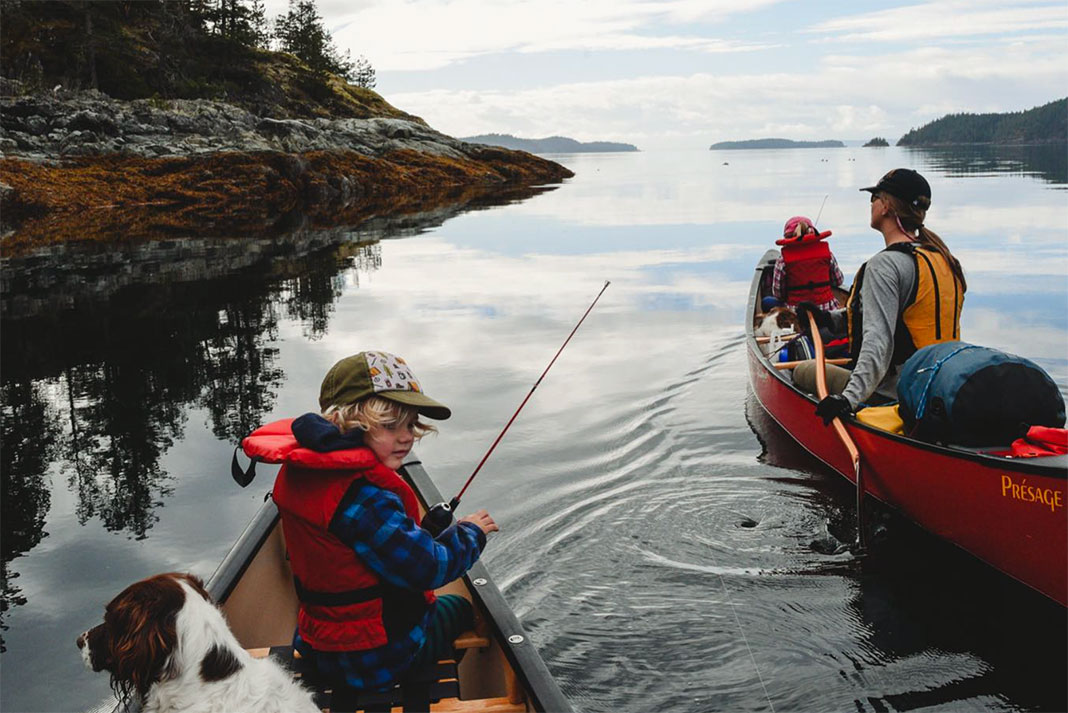
Best canoe size for families
While most canoes are intended for one or two paddlers, larger canoes designed for three or more give families the option to paddle together in one boat.
Families with young children and light gear carrying needs can get away with a tandem canoe length of 16 to 17 feet, says Mills. If your canoe has only two seats, small kids can sit on bags in the middle.
Eighteen- to 20-foot canoes are best suited to larger families or backcountry trips with lots of cargo. If everyone will be paddling, three-person canoes that are 18 feet or longer allow sufficient space to avoid bashing blades. Dedicated three-person canoes also have a higher capacity and built-in third seat to accommodate three full-size paddlers.
Still not sure what canoe size your family needs? “Buy the canoe for the largest load it will carry,” advises Clipper’s Marlin Bayes.
Key to making an informed decision is understanding the relationship between capacity and freeboard, he says. Freeboard describes the distance between the waterline and the gunwale, and changes as weight is added to the canoe. For example, a 17-foot, six-inch canoe may have 12 inches of freeboard when carrying 300 pounds, but that will diminish to just six inches of freeboard if the load is increased to 1,000 pounds.
More freeboard increases a canoe’s seaworthiness; too little, and you could end up swamping in rough conditions. Check the manufacturer’s recommendations, says Bayes, “and remember, six inches of freeboard is only acceptable on the smallest of lakes.”
Best canoe size for tripping
Choosing a canoe for multiday or multi-week trips into the backcountry is similar to selecting a family canoe. Once again, capacity and freeboard are key. In addition to paddler weights, you’ll need to factor in the size and weight of all your canoe packs and food barrels. The longer the trip, the more capacity you’re likely to require.
In a tripping context, a 16-foot tandem canoe can hold two weeks’ worth of well-packed gear. Two paddlers in a 17-foot canoe will have extra space for another two weeks of food. For trips longer than a month, you’ll be most comfortable in an 18-foot canoe.
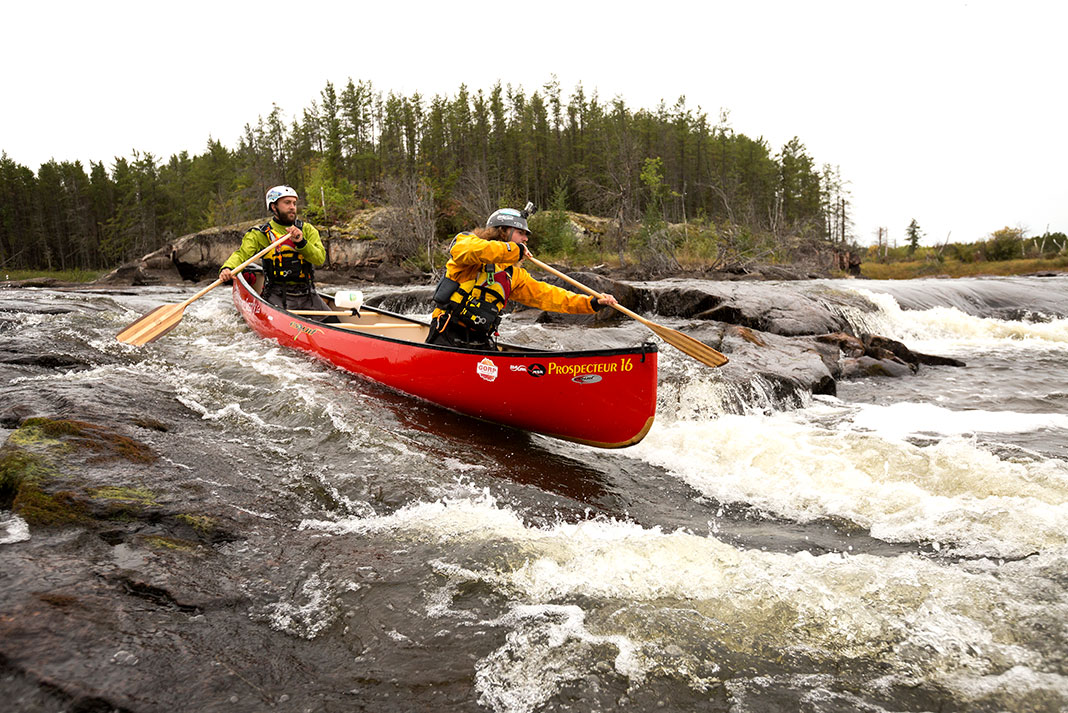
Best canoe size for whitewater
Canoes designed for river tripping tend to run a bit shorter than other classes of canoes.
“Most will max out around 17 feet, six inches with 15 feet to 16 feet, six inches being more popular choices,” says Jeff Hill, owner of H2O Canoe Company. Go too long, explains Hill, and you’ll lose precious reaction time in dynamic river environments.
Besides length, when shopping for a whitewater-capable canoe, look for boats with more depth and rocker.
Rocker describes the amount that the bow and stern of the hull curve upward. Why does this matter? The amount of rocker a canoe has can change its waterline length—and how it handles in varying conditions. Here’s how it works.
Canoe lengths are most often given as overall length from the farthest points bow to stern. But there’s another way to measure canoe length: along the waterline, or the amount of the canoe that sits in the water. Canoes with little rocker have a longer waterline relative to overall length—maximizing straight-ahead efficiency.
More rocker, on the other hand, shortens waterline length, allowing these canoes to turn and spin more easily. The result is a slower boat with better maneuverability for dancing through river waves and currents.
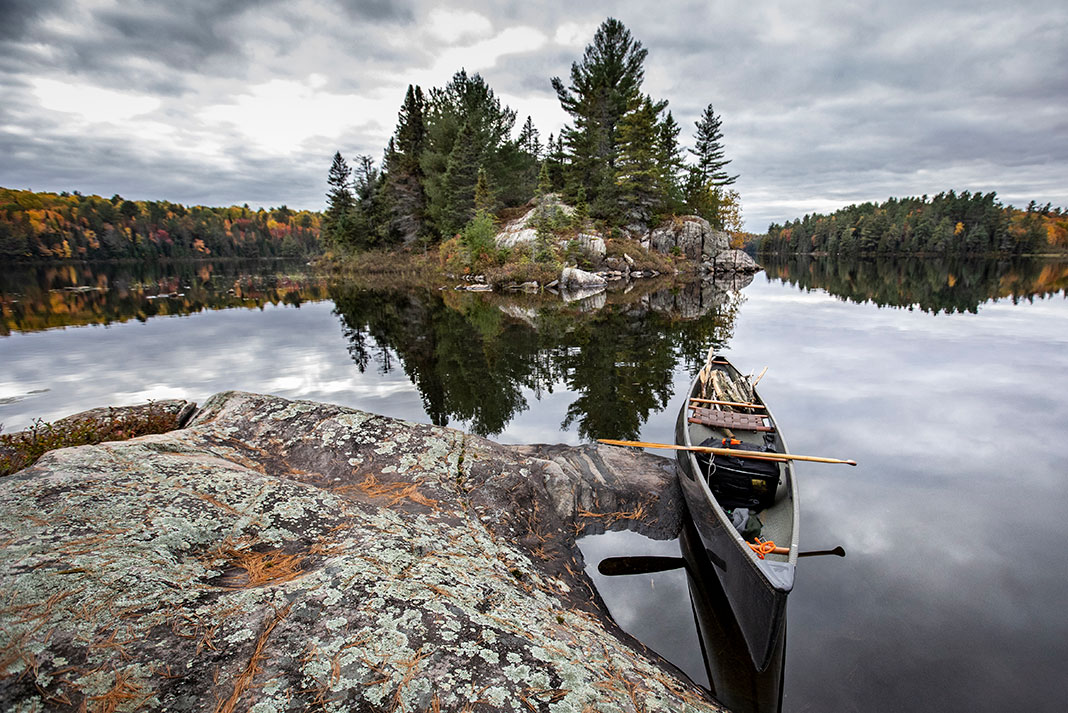
Geographic trends
Geography plays an important role in canoe size, both in the predominant type of water in a region and the canoe culture found there.
Adirondack pack boats are one example of this.
Another is in the Midwest and Central Canada, where larger lakes and iconic wilderness canoe areas like the Boundary Waters and Quetico hold a tradition of long canoe trips—and longer canoes. Here, 17 feet remains the norm for tandem lakewater canoes.
In the western states and provinces, where canoeists enjoy paddling big mountain lakes, large volume rivers and coastal waters, canoes trend longer than their eastern cousins. If ocean paddling is your thing, Bayes suggests a tandem canoe of 17 feet, six inches to 18 feet, six inches in length, citing speed and seaworthiness in rough conditions as important reasons for sizing up.
Specialty canoe sizes
Pack boats are the smallest canoe size you’ll find, with the shortest models just 10 to 12 feet long and weighing less than 20 pounds.
Originating 140 years ago in the isolated mountain lakes of the Adirondacks, pack boats are a unique style of canoe still popular today. With their short length, wide beam and ultralight construction, these solo canoes thrive wherever small lakes and long portages are the norm. These canoes also work well with double-bladed paddles.
Contemporary pack boats continue to evolve, bridging the gap between canoes and kayaks. While short, peapod-shaped canoes still define the category, manufacturers have added sleek and speedy 15- to 16-foot models, and even tandem pack boats.
At the other end of the canoe size spectrum are aptly named big canoes. Measuring 22 feet or longer, big canoes are best suited to kids camps, tour groups and racing teams.
Clipper Canoes is the world’s leading manufacturer of big canoes. Many of their designs are adapted from traditional voyageur canoes used to transport cargo during the fur trade, with others drawing inspiration from the cedar log canoes crafted by First Nations people along the West Coast. Clipper’s largest canoe size is 36 feet and will easily accommodate you and your 17 closest friends.

Get the canoe size you’ll use most often
With so many variables to consider, there is no single answer to the question, “What size canoe do I need?”
Think carefully about what you want to do with your canoe—who you’ll be paddling with, where you’ll be using it, what the typical trip length will be, and whether you’ll be portaging.
“Be honest with yourself,” Mills advises. Nearly every choice will involve some compromise. “If someone tells me they love to go on solo fishing trips, but they also want to be able to paddle with their family of five, I’ll press them a bit to understand what type of use the canoe will see 75 percent of the time.”
Hill offers similar advice. “If you want to solo paddle regularly, get a solo canoe,” he urges. “Don’t make do with a tandem because someone might go with you someday.”
Whatever size canoe you choose, make sure you can store and transport it easily. If it’s difficult to get the canoe on your car, chances are you won’t use it as much as you initially hoped.
“Sometimes the answer is simply that you’re going to need more than one canoe,” Mills says. It’s sound advice; just look in the garages of canoeing enthusiasts around the world.
Virginia Marshall’s first article for Rapid Media appeared in the Spring 2007 issue of Adventure Kayak. She went on to become editor of Rapid and Family Camping for the Spring 2009 issues, and eventually editor of Adventure Kayak and Canoeroots in 2011.
The length of a canoe will influence its speed, weight, carrying capacity, tracking and more—all important considerations when finding a boat that will suit your needs best. | Feature photo: Ryan A. Woodsworth



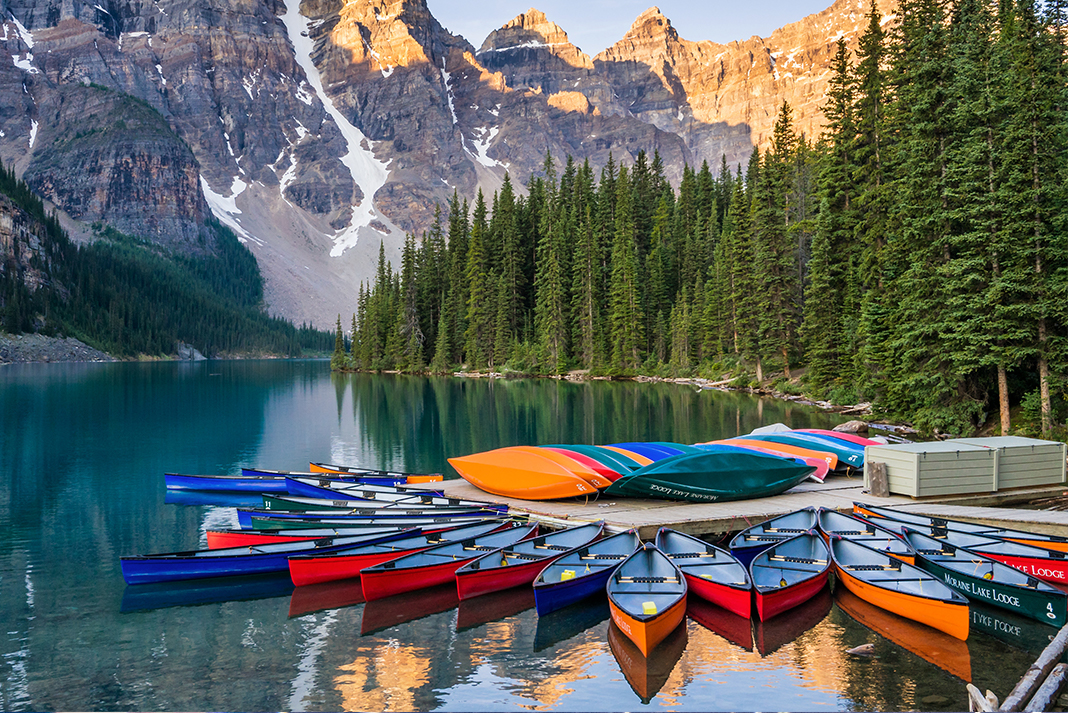
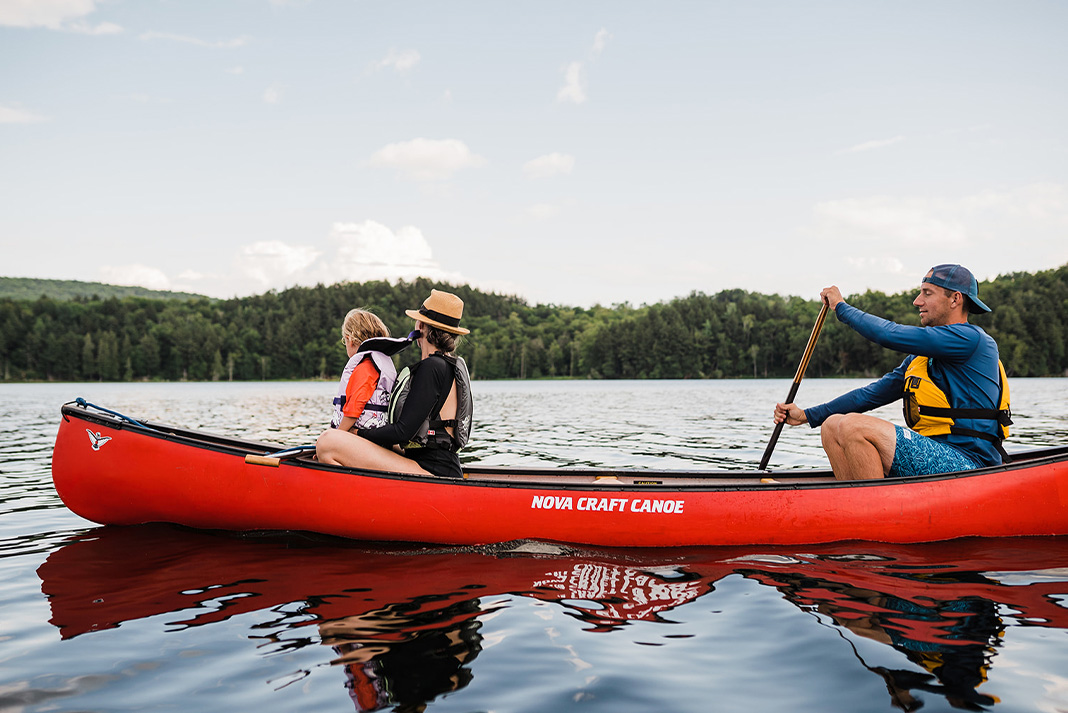
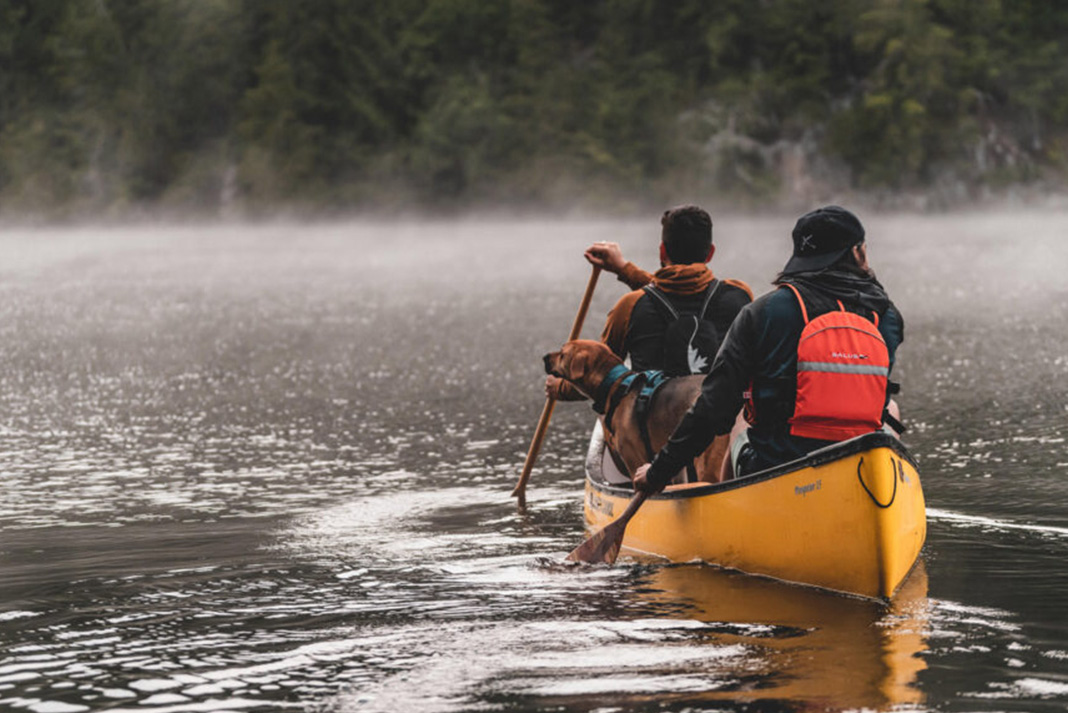
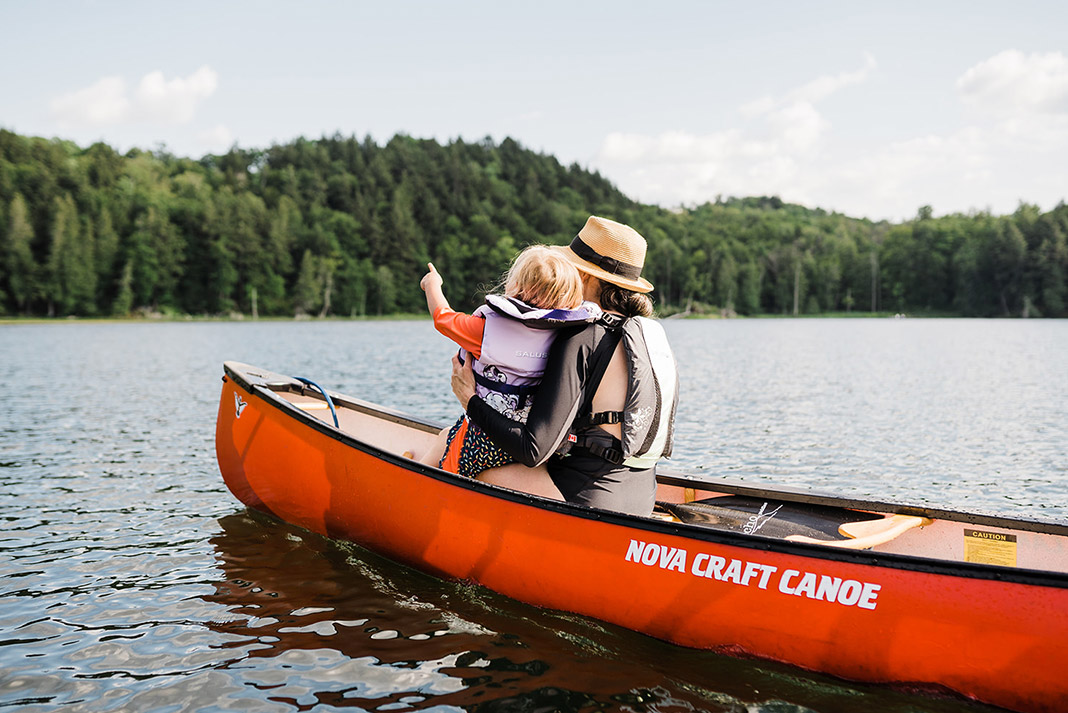
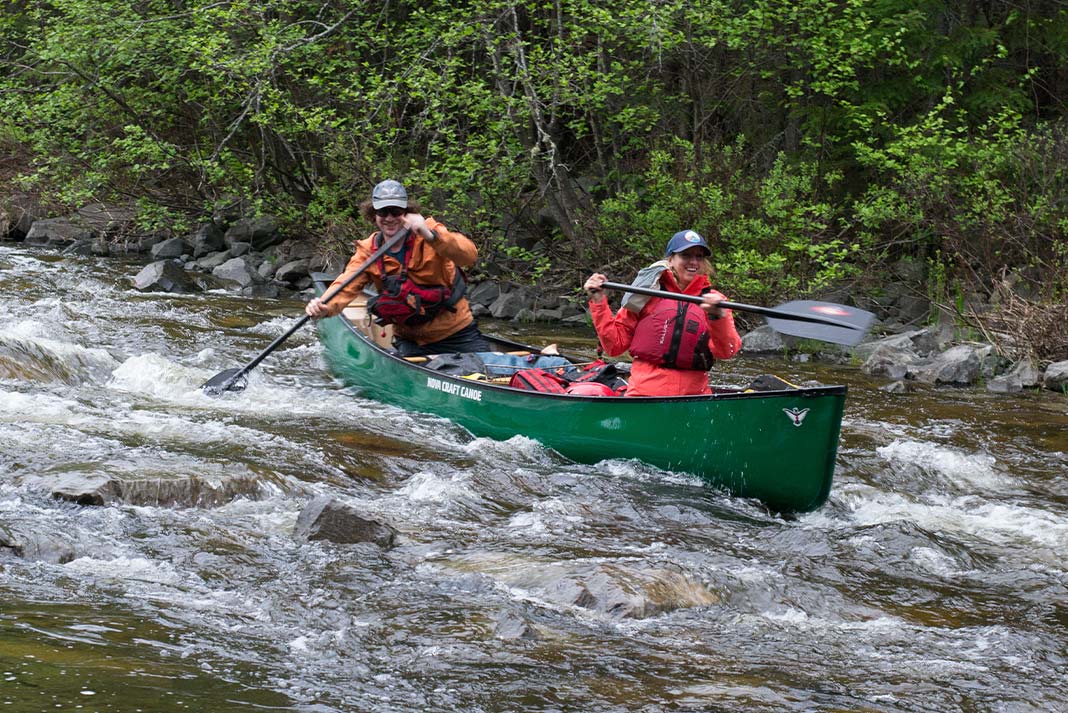
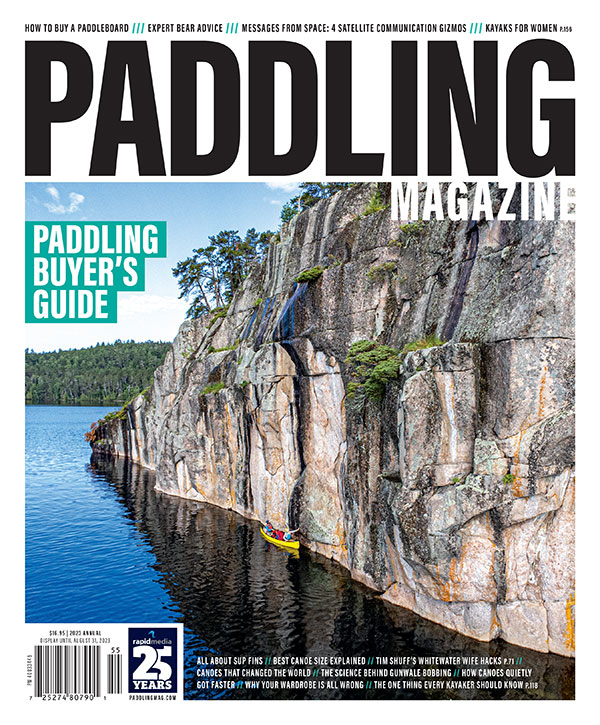 This article was first published in the 2023 Paddling Buyer’s Guide.
This article was first published in the 2023 Paddling Buyer’s Guide. 
